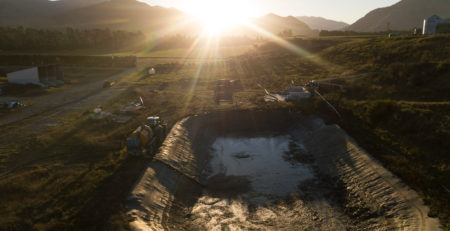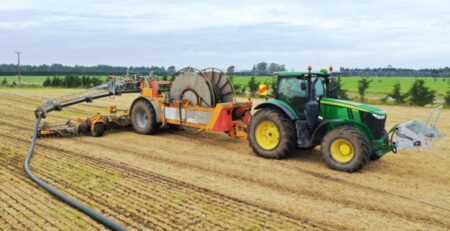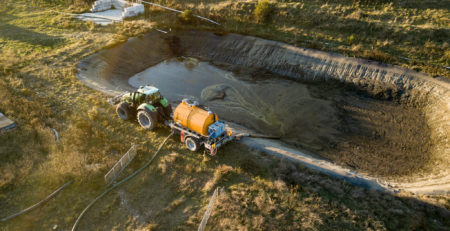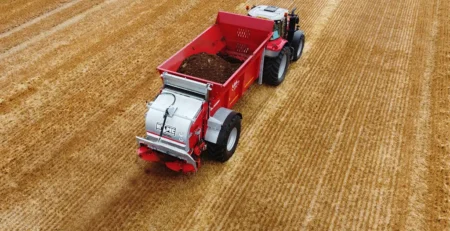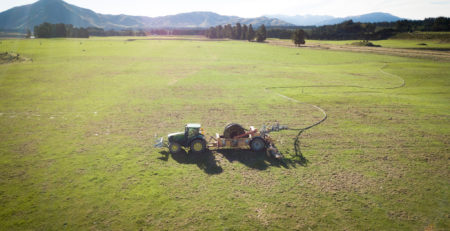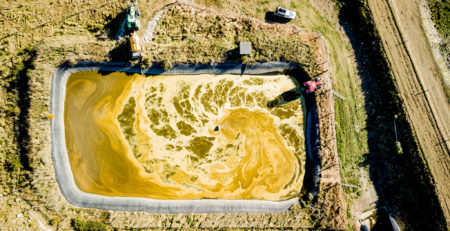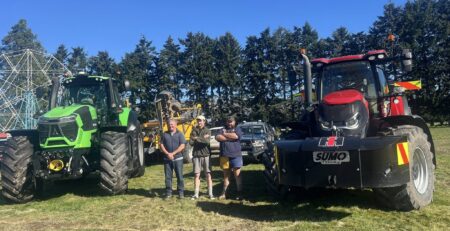Dairy Effluent Solutions
Dairy Effluent Solutions
Dairy effluent is a valuable resource which, when managed well, increases pasture production and reduces fertiliser costs.
Between 1990 and 2019: dairy cattle numbers increased by 82 percent nationally from 3.4 million to 6.3 million. Canterbury dairy cattle increased tenfold (973 percent) from 113,000 to 1.2 million. Southland dairy cattle increased sixteen-fold (1,584 percent) from 38,000 to 636,000.
What is the dairy industry worth to NZ?
Dairy contributes $7.8 billion to New Zealand’s GDP… The dairy sector contributes $7.8 billion (3.5%) to New Zealand’s total GDP.This comprises dairy farming ($5.96 billion) and dairy processing ($1.88 billion). Not to mention other businesses that contract to the dairy industry. It is undeniable that the Dairy Industry has become a valuable part of our country’s economy. With this hyped up production there is also the waste associated with the Dairy Industry.
Now that we know that dairy herds have grown significantly in New Zealand have you ever considered how much effluent does a cow produce? The standard figure for solids and urine production of an average dairy cow is 70 litres per day. Ten percent of this is generated during milking, i.e. seven litres per cow per day, and it all has to go somewhere.
Central Injection Agri understands the processes that are involved in expelling effluent created by dairy cows and how to maximise the nutrients that this by-product creates.CIA has built a growing business on effective management of the waste from dairy farms. These services include:
Effluent Pond Stirring and Emptying
Dairy farms are required to have sufficient pond storage especially over these wet winter months when spreading effluent is unpleasant and not particularly good for pastures either.Effluent ponds do require emptying i.e. holding ponds or existing oxidation ponds several times annually. In between times storage ponds require stirring to maintain maximum storage capacity. Pond stirring is one of our services we offer at Centra Injection Agri. Our powerful pond stirrers agitate the solids, breaking them down so they can maintain a liquid form.
By doing this sediments are deterred from settling at the base of the pond creating an ooey gooey sludge. Pond stirring distributes nutrients evenly through your effluent pond. This stirring not only stops a crust from being created on top of your slurry pond but also averages out the nutrients in liquid slurry allowing for a more even loading of nutrients to all of the paddocks this effluent is distributed upon.
Distribution of Liquid Manure – Slurry Injection
Slurry injecting is the process of grinding manure into small particles which can then be combined with water or an alternative fluid, to create a slurry consistency. Once the consistency is right this can then be pumped to our machine and injected below the topsoil into the paddock.
Central Injection Agri operates a John Deere 7250R Tractor with a RTK GPS to pull the Rotomax, while a Deutz Fahr 9340 TTV tractor powers the pump. The premium ject and pump communicate with each other through radio signals. The beauty about this system is that it can pump a vast amount of slurry – 180,000 to 200,000 litres of slurry an hour! There is zero soil compaction, as a heavy tractor does not have to travel across the paddock. CIA can pump 2.5 million litres of effluent from a pond in 13 hours.
Once injected into the ground this stimulates and boosts production of crops. Slurry injection can allow more nitrogen to be introduced into the soil, but, as with all manure application processes, farmers must measure and gauge the mineral levels within their soils ahead of applying or injecting any further fertilisers. Slurry injection has become a favoured process of application in recent years, due to its reduced ammonia emission (around 70% reduction), which can preserve Nitrogen, reduce odour complaints and overall provide a more cost-effective agricultural service solution.
The Proof is in the results

Results of slurry application of cow manure after 10 days with Veenhuis Rotomax on grass paddocks in New Zealand.
A real time example from a birds eye view – this image illustrates the difference of growth for grass that has been injected with slurry. For the trained eye, even from this height, the increase in grass growth is undeniable. Look closely, you can see, in the middle of the paddock where the injection of slurry has finished and the tracks left by the tractor shows a U Turn where the tractor has finished injecting the slurry. Take note: these results are after 10 days.
The graph below illustrates the high recovery of available slurry Nitrogen indicating that injection of slurry in spring considerably reduced the losses of Nitrogen associated with both surface spreading and applications made well before the start of the growing season.

The results are clear that precise injection of slurry has many immediate benefits together with long term results.
Muck and Slurry Spreading.
Muck spreading as a practice has been used for centuries to spread nutrients to crops and produce better quality yields year-round. Manure organic matter contributes to improved soil structure, resulting in improved water infiltration and greater water-holding capacity leading to decreased crop water stress, soil erosion, and increased nutrient retention.
An extensive literature review of historical soil conservation experiment station data from 70 plot years at 7 locations around the United States suggested that manure produced substantial reductions in soil erosion (13%-77%) and runoff (1%-68%). Increased manure application rates produced greater reductions in soil erosion and runoff. Additional studies during years following manure application suggest a residual benefit of past manure application. Muck spreading provides the flexibility to apply effluent in areas where the effluent irrigation system cannot reach. It can also be used for a nutrient boost prior to sowing a crop or applied on silage and hay paddocks.
Effluent is commonly grouped into three broad categories based on dry matter (DM) content:
liquids 0– 5% VeenHuis Rotomax (Slurry Injection)
slurries 5– 15% Slurry injection or Vacuum Slurry Tankers
solids > 15% Muck Spreader
Muck spreading equipment is commonly used for applying effluent from the following sources:
- pond sludge
- stone traps
- sludge beds
- solids separators
- scraped feed pads
- wintering pads or barns, and feed residues
Spreading effluent solids requires specialist machinery which is suited to the type of effluent being spread. Central Injection Agri has the tools for muck application and one of the most cost effective methods to spread the effluent solids.
Effluent solids are commonly characterised by their physical consistency, most crucially the inability to be broken down into smaller particles.
- Effluent high in sand or long feed fibre content is easier to load with a tractor
- Slurry tankers can generally pump and spread effluent less than 15% solids
- Muck spreaders are best at handling effluent above 20% solids
An integral part of our fleet are the two slurry tankers. Ideal for liquid and running effluent.
- Hi Spec 3000 Gallon Vacuum slurry tanker
- Garrant 4000 Gallon Slurry Tanker
CIA’s Vacuum tanker is a system whereby the slurry is sucked into the tanker by using an air pump to evacuate the air from the tank to create a vacuum; the tanker is emptied using the air pump pressurises the tanker, forcing the slurry out and spreading evening on top of the pasture. This method of slurry spreading is ideal for denser, solid manure that has not been through the maceration process that would be better suited to the slurry injection system.
Reliable Operators – Central Injection Agri
Nobody cares more about doing the best job on your Dairy farm than an owner operator. Central Injection Ltd is an owner operated business with experienced staff. We have built our business on our solid reputation and have been servicing Dairy farms throughout North, Mid and South Canterbury for the past 5 years.
Trusting your slurry management with CIA Ltd is the right move. Tom has a long association with farming in Canterbury and has had many different roles including harvesting, dairy conversions, and tractor driving. The knowledge Tom has accumulated from working on the land along with the contribution of knowledge and business smarts from local contractors has seen his business grow from strength to strength – Just like the paddocks he fertilises.
Upon launching our new website we went out to our current customer base and asked them what they thought of our services – Click on this link to see their reviews.
Central Injection Agri
Handled poorly, uneven distribution where more effluent is spread than the soil can absorb, it can lead to pollution, non-compliance and hefty fines. Done correctly not only is slurry spreading good for pasture growth, it is a cheaper option than bringing in fertiliser. The team at Central Injection Agri are your solution for efficient Dairy effluent management.
Take the hassle out purchasing yet another expensive implement and contract your effluent distribution to Central Injection Agri.
Get in contact with Tom, he is only too happy to take your call and discuss your options with you.

